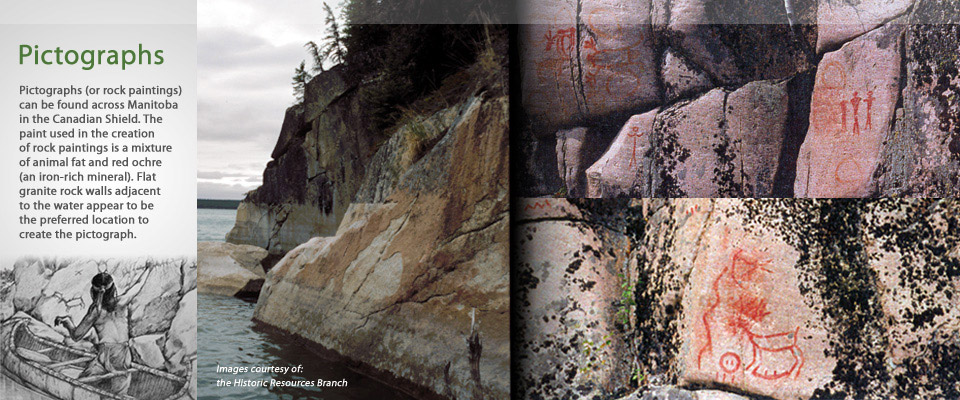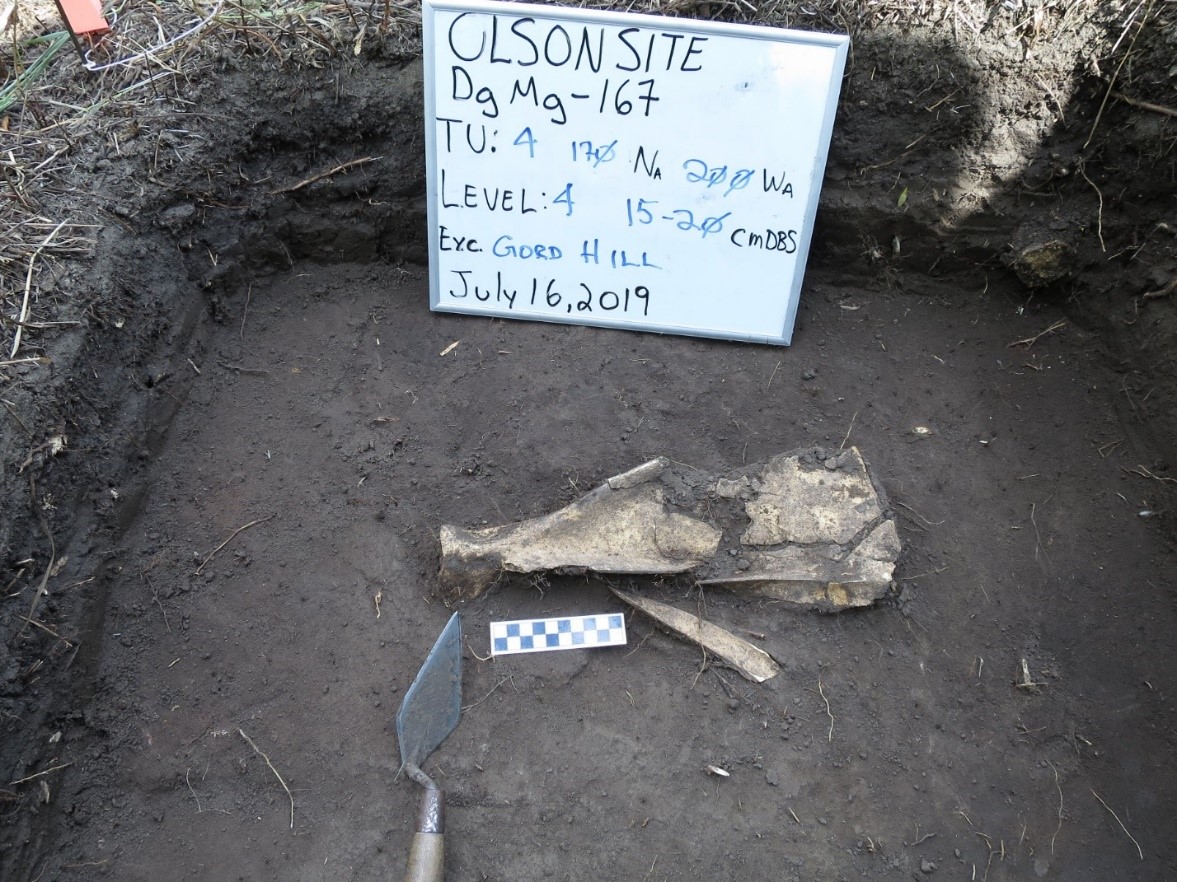2019
Fieldwork associated with the initial testing and assessment of the Olson site took place in 2019. This was a joint project sponsored by Brandon University and the Manitoba Archaeological Society, with additional funding from the Manitoba Heritage Grants program. The goals were to: 1) establish the presence and extent of intact archaeological material associated with the people who made and used the bison scapula hoes; 2) collect samples to determine the time of site occupation; 3) collect soil samples for palaeobotanical (ancient plant material) analysis; and 4) conduct an initial pedestrian survey of the surrounding prairie.
Excavations by professional archaeologists who volunteered their time enabled us to locate a buried soil layer (paleosol) with intact cultural deposits associated with the agricultural occupation about 30 m south of where the first bison scapula hoe was found. Recoveries included a modified deer scapula and bone flakes from a possible bone tool workshop. Bison bone was also observed eroding out of a cut bank exposure of the upper paleosol bank a few metres to the southeast; other faunal material occurred at a depth of 75 cm below the surface. Ten 90 cm long soil cores were collected from different parts of a nearby grassy floodplain expanse that may have been the location of pre-contact gardens/agricultural fields.
Age estimates made on samples collected from the paleosol band indicate the horticultural occupation probably lasted for a period of about two hundred years (350+/-30 BP to 150+/30 BP). Material collected from the cut bank at 75 cm below the surface dated to 780+/-30 BP and appears to be associated with an earlier occupation by hunter-gatherers.
|
In situ modified deer scapula in level 4 of test unit 4. (Image courtesy of Gord Hill) |
Soil coring activities: Dr. Sara Halwas watches Mr. Dan Roberts using the post pounder to drive the corer down 10 cm. (Image courtesy of Mary Malainey) |






